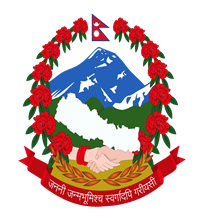Nepal: Government
Key Figures
- Chief of State:
- President Ram Chandra Poudel
- Head of Government:
- Prime Minister Khadga Prasad Sharma Oli
Overview
- Government Name:
- Federal Democratic Republic of Nepal
- Constitution:
- Adopted: 1990; As the country's 5th constitution since 1948, this constitution changed a previously partyless system into a multiparty system. It also changed the King's role into one of a constitutional monarch rather than solely a monarch.
- Government Type:
- Federal Parliamentary Republic

Index of Economic Freedom
Grades each country on a scale of 0 to 100, based on ten freedoms, with 100 representing the greatest amount of economic autonomy from government intervention. Source: Heritage Foundation (2023)
Country Risk Rating
C
A very uncertain political and economic outlook and a business environment with many troublesome weaknesses can have a significant impact on corporate payment behavior. Corporate default probability is high. Source: Coface (2024)
Government Branches
| Main Powers | Election Process | Election Cycle 1 | |
|---|---|---|---|
| Executive | President serves as the head of state of Nepal. Prime minister exercises executive power and heads the cabinet of ministers. |
President and prime minister are elected by parliament. |
5 years |
| Judicial | Highest court of Nepal. |
Appointed by the prime minister on the recommendation of the Constitutional Council and the Judicial Council. |
Mandatory retirement age of 65 |
| Legislative | Serves as the country's parliament and legislative body. |
240 members are elected by plurality vote in single-member constituencies. 355 members are elected through a closed-list proportional representation system, and 26 members are appointed by the cabinet. |
5 years |
Regional Trade Blocs
International Organization Participation [2]
Environmental Agreements [3]
Tax Information [2]
- Tax Authority:
- Information not available
- Tax Name:
- Information not available
Sources:
- ElectionGuide http://www.electionguide.org/
- EY, http://www.ey.com
- CIA World Factbook, https://www.cia.gov/the-world-factbook/
- U.S. Bilateral Relations Fact Sheets http://www.state.gov/r/pa/ei/bgn/


